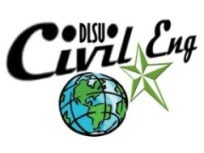 |
| Jason Ongpeng (CE Dept Chair) and the writer, Dr. Lessandro Garciano (STE Division Head) |
Summit Reflections and Lessons by Dr. Lessandro Garciano
Engr. Jason Maximino C. Ongpeng and I attended the QS (Quacquarelli Symonds) Subject Focus Summit in Civil Engineering held at the Nanyang Technological Centre (NTU) from June 8 to 10, 2015. This is the first time that QS organized a summit with civil engineering as the subject focus. Three tracks were identified by the organizing committee as the current trends in civil engineering education. These tracks are as follows:
Track
1:
Branding Civil Engineering: Rediscovering Our Narrative
Track
2:
Trends in Civil Engineering Education: Professional Orientation
Track
3:
Future Directions of Civil Engineering Research and its Translation to Industry
As a participant
in this first-ever summit, we tried to set the following objectives:
a.
to observe how the summit is organized and
conducted
b.
to promote our civil engineering department
by participating in formal discussions as well as informal conversations
c.
get inputs on how to sustain research in
the department
d.
get ideas from other universities on how
to improve our QS standing
Before
I expound on how the following objectives were met, here is the post event
report from QS. The summit convened about 125 academics, senior higher
education administrators and industry professionals from 26 countries. The
countries that were represented were: Australia, Belgium, Brunei Darussalam, China, Egypt,
France, Germany, Hong Kong, India, Indonesia, Ireland, Japan, South Korea,
Malaysia, The Netherlands, New Zealand, The Philippines, Portugal, Singapore,
South Africa, Switzerland, Taiwan, Thailand, United Arab Emirates, United
Kingdom and United States. Our country was represented by four delegates (two
ladies from the University and two from DLSU).
The summit was well
organized with keynote speakers from Asia, US and Europe. Mr. Pieter Stek, Head
of External Relations – Asia, Middle East and Africa, adeptly handled the
Q&A after each track by preparing engaging questions. The delegates also
engaged the speakers either by asking direct questions or by sharing their
specific experience in their universities or place of work. The welcome dinner,
the coffee breaks and the afternoon tea served was an informal way to meet new
friends, discuss in detail some issues or to meet old friends.
During one of the breaks, Jason and I inquired from Mr. Stek the possibility of organizing a summit in the Philippines. He suggested that we come up with good themes or tracks for the summit to be able to attract delegates from Asia and the rest of the world. He also mentioned that QS charges a hosting fee and that we communicate with Mandy Mok, CEO of QS Asia regarding our interest to host a QS subject focus in DLSU-Manila.
During one of the breaks, Jason and I inquired from Mr. Stek the possibility of organizing a summit in the Philippines. He suggested that we come up with good themes or tracks for the summit to be able to attract delegates from Asia and the rest of the world. He also mentioned that QS charges a hosting fee and that we communicate with Mandy Mok, CEO of QS Asia regarding our interest to host a QS subject focus in DLSU-Manila.
We promoted the department and the university through
informal discussions during coffee breaks and lunch. Indeed we were able to
network with professors and researchers from Japan, Korea, Malaysia, Singapore,
France and many others. It was a challenge to exchange a few words with the
keynote speakers, but luckily I managed to talk to Professor Koichi Maekawa (“Infrastructure management and alliance with
industries and public sectors”) and Professor Wang Rong (“Environmental
Engineering: an Important Discipline Linked with Civil Engineering”).
Finally, with regard to
sustaining the research in the department, I find the following worthwhile
pursuing:
a. Sustain research by linking
with industry that can provide funds, research direction as well as industry
dimension to faculty and students. As an example, Sungkyungkwan University
(SKKU) partnered with Samsung that saw an increase in graduate student
population, remarkable increase in research funds as well as research outputs.
It is also interesting that Samsung professional lecturers helped in the
teaching process.
b. Enhance inter-disciplinary
research to address societal problems. Professor Maekawa of the University of
Tokyo has shown how the academe can take the lead in addressing some of
society’s problems using the various technical tools at its disposal, e.g.,
risk identification and modeling, disaster management and mitigation, computer
simulation and visualization. Professor Marianas of the University of Illinois
at Urbana – Champaign also highlighted the need for the department to conduct
interdisciplinary research as well as be engaged locally and globally as well.
In his department, the faculty were grouped into tracks / research fields and
their research are highlighted. This packaging makes it attractive for industry
to engage them as external consultants.
c. Develop further the
civil engineering curriculum to address present and urgent industry needs.
Although our department has four specializations, e.g., Construction Management
and Technology (CTM), Hydraulics and Water Resources Engineering (HWR), Structural
Engineering (STE) and Transportation Engineering (TRE), it can still be improved
to a more flexible curriculum that can produce graduates who will occupy top
positions in legal, leadership, research or entrepreneurial industry in the
future. Prof. Ng of the Hong kong University of Science and Technology (HKUST)
expounded on this.
In my
opinion if we can successfully implement the above directions we can attract
more undergraduate and graduate students as well as faculty, increase research
output and hopefully improve our QS standing.

.jpg)



No comments:
Post a Comment